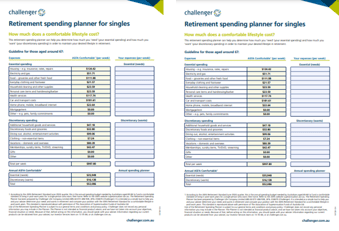Table of Contents
Calculate how long your savings will last
Use the Retire with Confidence tool to estimate how long your retirement income might last, the amount of Age Pension you may be eligible for and the impact of adding an inflation-linked lifetime income stream to your retirement portfolio.
Learn
Education and helpful resources on topics that are relevant for people who are retired, planning their retirement, or who are planning for residential aged care.
Planning for a confident retirement
A key to retiring with confidence is knowledge. Use this guide to familiarise yourself with key topics to help you start building your retirement plan.

A guide to income in retirement
In this guide, we share five key steps to consider in building a comprehensive retirement income plan to provide you with regular payments for life. You’ll learn how to manage your income needs over time so you can feel comfortable with your spending throughout retirement.
Step 1: Changing with the times
Step 2: Your retirement ‘pay cheque’
Step 3: Navigating the risks
Step 4: Secure retirement income
Step 5: Enjoy your whole retirement journey
Guaranteed regular income for life
Our online interactive retirement spending planners for singles and couples can help you figure out how much income you may need in retirement. You should consider what your essential costs are and also what your discretionary expenses might look like so you can understand how much income you might need.

Subscribe to Horizons
Horizons is our newsletter designed for retirees or those planning their retirement. Subscribe now to receive our latest information to help you live well in retirement in Australia.